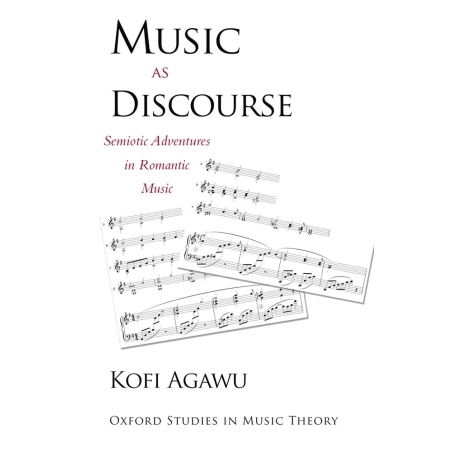Kofi Agawu's Music as Discourse has become a standard and definitive work in musical semiotics. Working at the nexus of musicology, ethnomusicology, and music philosophy and aesthetics, Agawu presents a synthetic and innovative approach to musical meaning which argues deftly for the thinking of music as a discourse in itself--composed not only of sequences of gestures, phrases, or progressions, but rather also of the very philosophical and linguistic props that enable the analytical formulations made about music as an object of study.
CONTENTS
Introduction
PART I
Theory
1. Music as Language
2. Criteria for Analysis I
3. Criteria for Analysis II
4. Bridges to Free Composition
5. Paradigmatic Analysis
PART II
Analyses
6. Liszt, Orpheus (1853-1854)
7. Brahms, Intermezzo in E Minor, op. 119, no. 2 (1893), and Symphony no. 1/ii (1872-1879)
8. Mahler, Symphony no. 9/i (1908-1909)
9. Beethoven, String Quartet, op. 130/i (1825-1826), and Stravinsky, Symphonies of Wind Instruments (1920)
Epilogue
Bibliography
Index
| Series | Oxford Studies in Music Theory |
|---|




